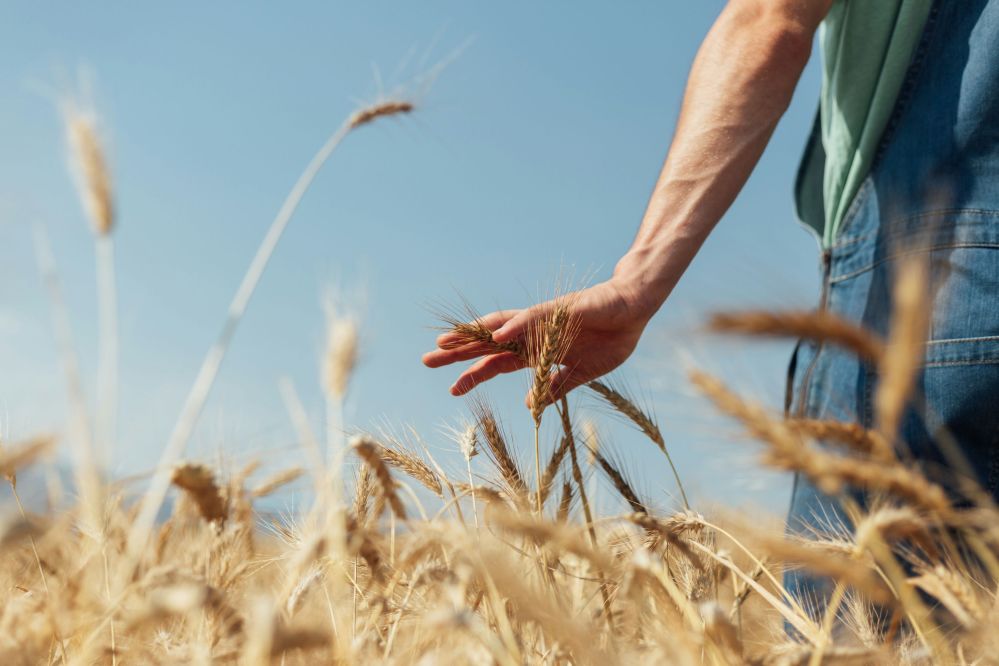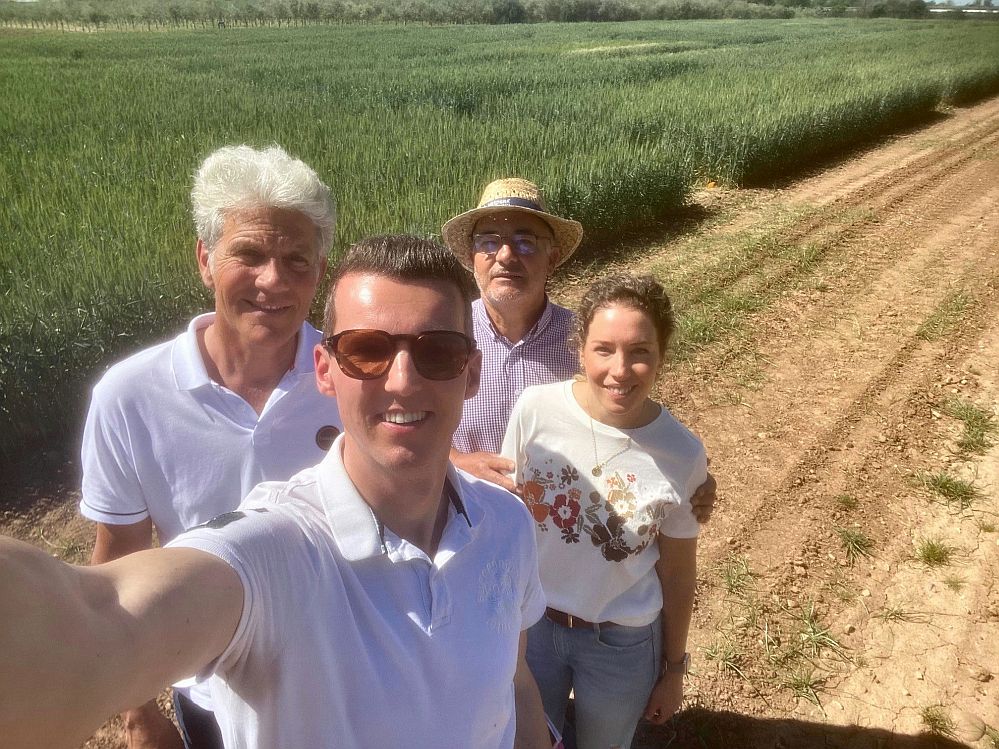“I always say it took 10,000 years to domesticate wheat and 40 years to domesticate Tritordeum,” says Etienne Vassiliadis, cofounder and CEO of Vivagran, a Barcelona-based startup that crossed wild barley with durum wheat and came up with a completely new crop.
Rich in protein, fiber and lutein and low in immunogenic gliadins from gluten, Tritordeum has exciting properties in baking, pasta-making, brewing, distilling, and animal feed, and some equally attractive agronomics qualities from heat, cold, and drought tolerance, to enhanced nitrogen use efficiency, anoxia tolerance, and disease resistance.
Its story—which began in the 1970s with postdoctoral work in the UK by Professor Antonio Martin that triggered a series of trips to Chile and Argentina to search for wild barley varieties—has since taken many twists and turns: The formation of a new company in 2006, commercialization in 2014, bankruptcy in 2020 followed by a corporate takeover gone wrong, and a second chance in 2021.
There have been times when he wanted to throw in the towel, says Vassiliadis, who was so blown away by the potential of Tritordeum when a flour sample hit his desk in 2014 that he joined the small team attempting to turn it into a household name.
“But I couldn’t do it because I believe in the product so strongly. I’ve never encountered anything like this in my career. It’s not every day you come across a novel cereal crop. It’s unique in the agrifood sector worldwide.”
AgFunderNews (AFN) caught up with Vassiliadis (EV) to get the lowdown on Vivagran, part of the fifth cohort of the AgFunder GROW Impact Accelerator [Disclosure: AgFunder is AgFunderNews’ parent company].

AFN: What’s your background?
EV: I have a master’s degree in food technology and I decided to start my career in R&D in the baking industry. When I came back from an internship in the US in the last year of my studies, I found a job in France working for a large baking ingredients manufacturer (CSM). Long story short, I then worked in Germany and Spain for various companies, but always developing new products.
AFN: What’s the backstory of Tritordeum?
EV: The backstory is fascinating. It started in Cambridge in the UK where Professor Antonio Martin was doing postdoctoral work in the late 1970s crossing wheats and barleys, which was kind of the holy grail: to combine the robustness of barleys and the yield of wheats.
He returned to the University of Córdoba in Spain and later joined the IAS-CSIC (Institute for Sustainable Agriculture), where he set up a Tritordeum breeding program.
At that time, they didn’t have a lot of material, so the scientists organized expeditions to Chile and Argentina look for relations of Hordeum chilense, a wild barley they were crossing with durum wheat (Triticum turgidum) to make Tritordeum.
They took some wheat varieties from seed banks in Spain and in North Africa and started to generate crosses to generate a primary population of about 250 Tritordeum lines, and that’s really when the whole breeding program started to make sense. They then used that population to cross with each other to generate more genetic viability and start a breeding program to select the first commercial line of Tritordeum.
In 2006, the scientists doing the research formed Agrasys, a spin-off of IAS-CSIC, and secured exclusive rights to the work developed there encompassing all the germplasm and knowledge built up over the years. By 2014, they had the first commercially available variety.
I always say it took 10,000 years to domesticate wheat and 40 years to domesticate Tritordeum!
AFN: When did you discover Tritordeum, and how did Vivagran get started?
EV: I actually discovered Tritordeum [while working at Atrian Bakers] as a customer. Some flour landed on my desk one morning and I started to experiment with developing an industrial bread. Shortly after, in 2014, the team at Agrasys invited me to join them as business development manager.
In 2020, we ran into financial difficulties and Agrasys was acquired by a US biotech company called Arcadia Biosciences, which then had a shift in strategy and decided to divest any projects that did not impact directly its P&L less than a year later. It was a case of either we shut down the company or you find someone to take over.
It was a huge disappointment and I almost dropped the project, but I couldn’t do it because I believe in the product so strongly. I’ve never encountered anything like this in my career. It’s not every day you come across a novel cereal crop. It’s unique in the agrifood sector worldwide.
So in December 2021, we [Vassiliadis and Wiro Nillesen, Tritordeum’s value-chain manager in Benelux/Germany] acquired the assets and launched as Vivagran at the start of 2022.

AFN: What’s so attractive about Tritordeum in baking?
EV: Many crosses have been attempted, but only this one led to a fertile amphiploid species, and that makes it unique. It’s robust when it comes to heat and drought and some field trials are also planned to test for salinity resistance, but what’s really exciting is its properties in baking and brewing.
For a start, it has high fiber content, about 20% more than bread wheat, and it’s mostly arabinoxylans and fructans, not beta glucans, which is actually good for brewing. It also has high levels of [the carotenoid] lutein, which gives it a nice golden color, and a higher level of protein, which explains its better nitrogen use efficiency. It has 14-18% protein vs wheat at around 11-14%.
One of the effects of high protein and fiber content is water retention. You see immediately when you add water that the Tritordeum flour retains more water [than regular wheat flour]. Also we have analyzed the types of proteins in there, especially the gluten proteins: gliadins, which are responsible for extensibility, and glutenins, which are responsible for elasticity.
Tritordeum contains fewer gliadins, especially the alpha and omega subfractions, which are connected to gluten intolerance.Tritordeum has 50 to 70% less of those proteins, so it seems to be tolerated by people with gluten intolerance, although it’s not suitable for celiacs, because it still contains gluten.
AFN: What’s attractive about Tritordeum for brewing?
EV: This is something we’ve worked on quite recently. But about 18 months ago, we started a project with a company called Boortmalt, which is the second largest malting house in the world. We sent over a few samples of Tritordeum, they analyzed them and came back to quite quickly to say it has very good enzymatic activity compared to malting barley, which is very important for the brewing as well as the baking industry, because it helps to produce sugars which are used by yeast in the fermentation.
This is also important for distillers, who are looking for the highest enzymatic activity possible, so they can achieve higher production of alcohol.
Another attractive thing about Tritordeum is that it doesn’t have glycosidic nitrile (something found naturally in barley that can create carcinogens in the distilling process in copper stills), so it offers a very good alternative for distillers working in copper.
It also happens to be low in lipoxygenase [an enzyme which shortens the shelf life of beer] and brewers are looking for ‘low LOX,’ so that’s yet another exciting trait we have.
Apart from all this, of course, the Tritordeum malts can deliver a really nice honey-like taste profile and a nice amber color in beer, which can help brewers create products that can differentiate them from the mainstream beers in the market.
AFN: What about animal feed?
EV: We are starting trials in this area now, but it seems like Tritordeum has a better biomass yield—not grain, but overall biomass yield—vs barley, oats, and ryegrass and other crops produced for forage, and more importantly, better digestibility and palatability.

AFN: It sounds almost too good to be true. What are the downsides/tradeoffs?
EV: One of the major tradeoffs is grain yield. In challenging environments in the south of Spain, for example, Tritordeum can compete with other crops on yield, but if we move to medium to high yielding environments, there is a yield penalty of maybe 25-50% in some cases. So our breeding program is aiming, of course, to resolve that, as it impacts the price at which we can buy back our harvest from the farmer.
So that’s why Tritordeum today is mostly produced in the [hotter, drier] Mediterranean region because that’s where we can be competitive. However, we are achieving yield improvements with our new lines that we’ve been screening in multiple geographies including Austria, Germany, Poland, the UK, and France, and we’ve already achieved up to 30% yield increase compared to our commercial variant. But we have to improve even further, which is why we are seeking investment at the moment to progress more rapidly on this front.
We don’t do gene editing at the moment, but one of our advisors Dr. Francisco Barro, who is a professor at the Institute for Sustainable Agriculture (IAS-CSIC) in Cordoba, is an expert in new genomic techniques, so we are keen to explore if gene editing could improve certain traits more rapidly. But that’s obviously just an R&D project at this stage.
The other challenge I’d say is about consumer awareness, which is always an issue when you introduce something new.
AFN: What is Vivagran’s business model?
EV: We have two business models, and a third to be unlocked. The first is based on production of seed and grain under contract, where we repurchase 100% of it, and then we sell those materials to farmers in the case of seed, and to grain processers such as millers in the case of grain. That’s what we call the distribution model.
Then we have a licensing model where we grant rights to third parties to establish the value chain from seed to food.
The third model, which we have been brainstorming for a few months, is exploring what we can do with the genetics of Tritordeum or with our other crop, DDRR [a cross between an ancient wheat relative (Aegilops Tauschii) and Rye (Secale)] to improve the breeding of other cereal crops.
We have evidence that Tritordeum can be used as a bridge crop to pass on traits to wheat and barley crops around sustainability, disease resistance, plus the traits around malting and baking quality. So for example we have a program with Sydney University to introgress the rust resistance of Tritordeum into their wheats in Australia.
There are several ways to generate revenue from that. One way could be to sell traits that could be identified genetically in the progeny of a cereal variety developed by a partner, and we could charge royalties on that trait for instance. Alternatively we could charge a fee upfront on the transfer of those traits.
Another way to do it would be to develop elite material from the cross of Tritordeum with wheat ourselves. So we could develop new varieties and license them, or sell those varieties to breeders or to industry.
AFN: What progress have you made so far?
EV: We are producing about 3,000 to 4,000 tons of material every year, so it’s a niche crop, but it takes money to maintain stock and finance it. One of the reasons the previous company [Agrasys] went bankrupt was because they had a high level of inventory and they didn’t have money to invest in market development. You need money for both.
So today we have certain projects which we cannot take on because we don’t have the stock. If we can take off our hands the risk of the production, we could scale up significantly because we have created a market and a brand that people want.
When we first started the company, we started trying to raise money right away, but it was exhausting. We spent a lot of time preparing data for investors when we should have been focusing on the business, so we decided to first focus on getting to profitability, and last year we generated €50,000 of profit.
But now we are in [the AgFunder] GROW [Impact Accelerator], one of the key objectives is to get attention from investors. And what we’d like to attract is corporate venture funds rather than venture capital because we need money, but we also need support in certain aspects of the value chain.
AFN: What else are you working on?
EV: The second crop we’re working on is DDRR, a cross between rye and an ancient wheat variety that has exceptionally high level of biomass and protein production and interesting traits including drought, heat, and disease resistance, so farmers can reduce water, fertilizer, and fungicide use.




